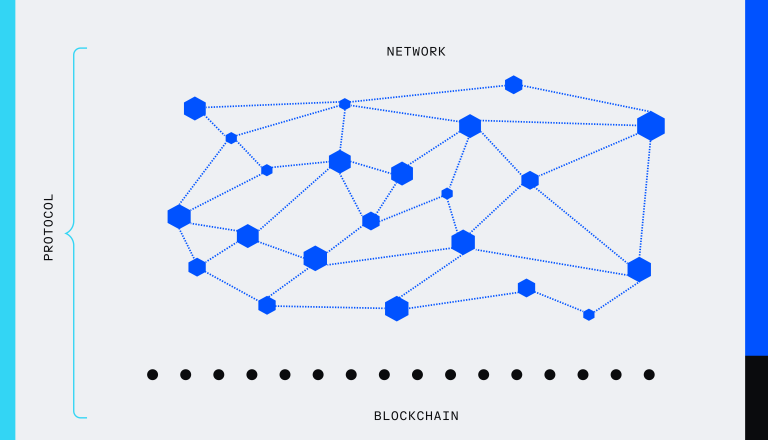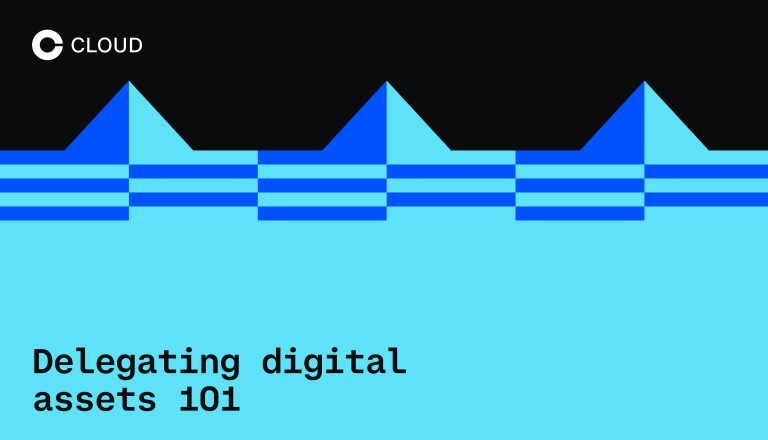Network or protocol? Token or coin? Deciphering the difference
January 26, 2022
There are subtle but distinct differences between these terms, and exploring their nuances can shed light on how a blockchain works.

The language associated with blockchain technology can be confusing. The terms “blockchain network” and “blockchain protocol” are often used interchangeably — the same applies to “token” and “coin.” However, there are subtle but distinct differences between their definitions, and exploring these nuances can shed light on how a blockchain works.
What is the difference between a blockchain network and a blockchain protocol?
By definition, a blockchain network is a system of devices, connected via the internet, that work together to create and validate a ledger of the transactions happening within their shared system. In a broad sense, the term blockchain network is often used not only to describe the system of devices and software taking part in the blockchain, but also the individuals, organizations, and institutions operating those devices.
A protocol is a set of predefined rules that dictates how a blockchain operates, and by which all network participants must abide for the blockchain to function. These rules may include the type of consensus algorithm that defines how nodes interact with each other, the governance structure, incentives (such as inflationary rewards) and penalties (such as slashing) for participation, and application interfaces.
In short, a blockchain network is the blockchain ledger plus everyone contributing to that ledger; a blockchain protocol is the rules that govern the network.
These two terms may seem to be used interchangeably, but as a rule they should not be. For example, to say “The Prairie network is growing” indicates that more people have been participating in the Prairie blockchain over time. Saying “The Prairie protocol includes slashing” indicates that the rules governing how the Prairie blockchain functions include mandates about slashing.
Remember that a protocol can provide the structure for more than one network — usually as development teams bring a new blockchain network to full implementation, or create a mirror network for experimenting with new development tools in a test environment.
Protocols are developed by teams of people such as foundations, private companies, or groups of developers. Protocol-development teams collaborate to establish rules with parameters that will create the blockchain they envision — once other participants join in the network to make it live. In the process of doing so, protocol teams regularly steward multiple blockchain networks that follow the same protocol.
Testnets are early, prototype versions of blockchain networks that typically do not run at full capacity. The testnet is used by programmers to identify problems with software or the design of the protocol prior to full deployment. When a network transitions from testnet to mainnet, it is generally considered to have gone live.
Testnet participants use testnet tokens or coins to interact with the network. These are assets without monetary value that function in exactly the same manner as mainnet assets would after mainnet launch. Though the same protocol governs both the testnet and the mainnet, they remain two separate networks with different ledgers and differing fiscal realities.
Kusama is considered a “canary” network — an experimental blockchain environment with real economic conditions. It serves as a proving ground wherein developers can build and deploy products, services, and other code functionality for the Polkadot ecosystem. Kusama and Polkadot are both built using Substrate — meaning they have almost the same protocol codebase despite being entirely separate blockchain networks.

What is the difference between tokens and coins?
Like “network” and “protocol,” the words “token” and “coin” are often confused when describing blockchain-based digital assets. This confusion is reasonable, to some extent, as both tokens and coins serve the same essential function within blockchain networks. However, there is an elemental difference between the two.
Digital assets, which include both tokens and coins, are used to keep blockchain networks running. They enable protocol rules, and network participants can use them to pay transaction fees or enact governance, receive them as rewards for their work keeping the blockchain operational, or stake them to help secure the network. Thus they function as stores of value and/or units of account.
Coins are defined at the core level of a blockchain protocol: they are the native digital assets of a blockchain. Conversely, tokens are built at a higher level, on top of a blockchain network. While coins are used to keep the base-layer blockchain operational, tokens are generally used to enable the protocols or applications built on top of the Layer 1 chain.
To give an example: the native coin of the Ethereum network is the ether (ETH). ETH is used for transaction fees within the network, as well as mining the rewards paid to the participants that secure it.
The Ethereum protocol allows for blockchains (called sidechains, or Layer 2s) and applications to be built on top of the network by way of smart contracts. These solutions draw the computations for their transactions from the base-layer Ethereum blockchain, and check in periodically with the base-layer chain via smart contract to confirm their validity.
The digital assets used to enable the functions of these sidechains and applications are tokens. Within Ethereum, these take the form of ERC-20 token — meaning they function within the parameters of the Ethereum ecosystem. Fees for any token transactions carried out within solutions built on top of Ethereum must be paid in ETH.
What does it mean to ‘build on top’ of a network?
Creating a blockchain network from scratch is time-consuming and requires a high level of technical proficiency — along with much buy-in from other stakeholders and participants. Having a large number of participants in a blockchain network increases its decentralization, thus making the network more secure.
But building up a community of network participants is not an easy task. It generally makes more sense for someone who needs to use a blockchain — for example, a dApp developer with a particular use case, such as secure data sharing, in mind — to participate in a strong, active blockchain network rather than start a smaller, weaker one that is more vulnerable to attacks or crashes.
Because of this, it is common for developers to build a sidechain or layer-2 chain, or a decentralized application on top of an existing network. In doing so, their blockchain adopts the protocol rules of the network within which they are built — though they often institute their own protocol to establish further rules specific to the new chain.
Blockchains or decentralized applications built on top of existing networks benefit from operating within an established protocol, establishing a consensus to verify their transactions, and using digital assets in their functions.
Want to learn more?
So what do you do with these coins and tokens? And how do you participate in a blockchain network? Learn more about how to earn rewards via the delegation and staking of digital assets — and how to get involved — in our guide to Delegating digital assets 101.
